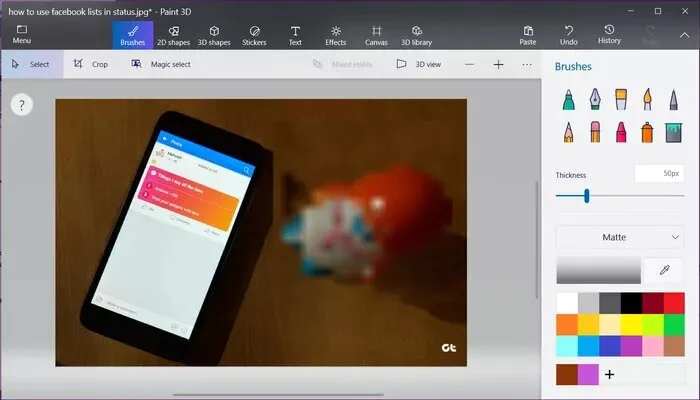With the latest revolution and technology boosts, many updates occur in features of almost all software or available tools to ensure their place. Due to the requirements, Microsoft Office updated its features likewise. In mid-2017, Microsoft announced that Paint would become a “deprecated feature” of Windows. It may not be reinforced moving forward and may not be included with new computers that craft with Windows. Microsoft favors Paint 3D instead, but that would not discourage people who have been using Paint since its unveiling in 1985.
There are a lot of image editing tools, but for this particular operation, why are we talking about Microsoft Paint? It is just because every tool developed by Microsoft Office is considered as a more reliable source and is popular among users. That is the reason we specify Microsoft Paint for this purpose.
How to Pixelate an Image via Microsoft Paint

Now it is at your fingertips to pixelate your image via Microsoft Paint by learning two different methods given below. You can follow one of them per your comfort or ease.
Method 1: Pixelate an Image via MS Paint
Step 1: Open the Paint app and “Select File.” Step 2: Now, “Open the image” you want to pixelate.
Step 3: “Click on Select” from the toolbar, and then tap on Rectangular selection.
Step 4: “Make a rectangle” on the picture.
Step 5: “Click on a corner” and make a small rectangle.
Step 6: “Sort the rectangle” is certainly large to select all.
Step 7: Now, simply “Copy” the pixelated rectangle.
Step 8: In the final Step, “Paste it” in the image in Paint 3D.
If you are a beginner or not familiar with MS Paint, then you should follow method 2 for more convenience.
Method 2: Pixelate an Image via MS Paint (For Beginners)
Step 1: From the top menu, “Select the Home tab.” Step 2: In the image box, click on the“Resize button.” Step 3: A Resize and Skew window should pop up. Now, “Click on the circle next” to Pixels.
Step 4: In the field next to Horizontal under the Resize heading,“Enter the custom resolution.” Step 5: “Make a note” of the resolution (this innovative number that you put there should be less than the number previously in the pitch). The lower the number, the more the pixilation.
Step 6: After the custom resolution, “Click on the OK button” to pixelate an image.
Step 7: Click on the “File tab” and select “Save as.” Step 8: Now,“Choose the one” you want or prefer from the list of available formats.
Step 9: “Open the saved image” again in Microsoft Paint, similar in the beginning.
Step 10: Click on the “Home tab” and then the“Resize button.” Step 11: Navigate to the “Pixels menu” again and enter the “Original resolution.”
Step 12: “Save” this again in the format you desire.
Final Words
You can open the image in any photo application, and you will notice that the image now appears pixelated. You can easily take advantage of this feature of MS Paint. Pixalated pattern are often used these days in blurring some faces on purpose. Sometimes, it is used to blur the content that contains nudity or violence.













